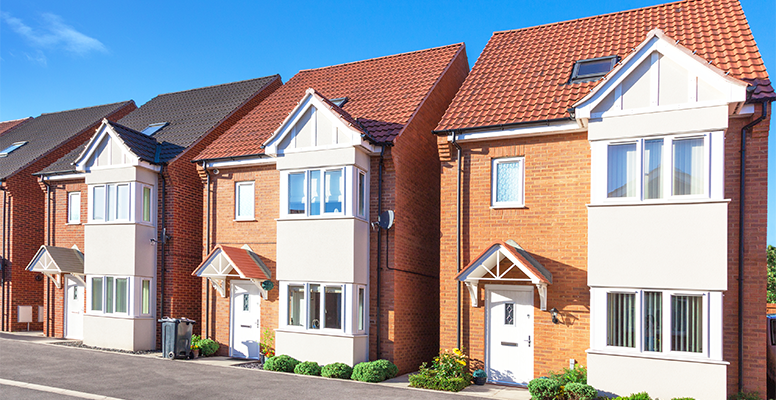31st July 2025
A turning point for social housing
Mark Holdsworth, sales director, Civica
It feels like a time of new opportunities in the social housing sector. Finally, the calls for more sustainable funding that housing associations have long been lobbying for have received an answer with £39bn allocated for the next decade in the government’s June spending review. This brings the possibility of authorities committing to larger, longer-term projects that can bring real change as opposed to operating in short funding cycles.
Elsewhere, the devolution programme that was announced at the end of last year specifies that housing and strategic planning will be one of the cornerstones for new regionalised powers. This means greater freedom in determining exactly how funding can be allocated at a local level. While this will begin in earnest with current mayoral authorities, over time the government plans to deliver full devolution of the funding and delivery of affordable housing.
And the third piece of the puzzle is improvements in housing technology that promise transformational change in areas such as buildings maintenance, tenant communications, compliance, data-led decision making and financial management. Legacy systems have hamstrung the sector for too long, but as data maturity improves it opens the door to far more digitised services that can bring new financial resilience, deliver better citizen welfare and make good on community commitments that had previously been deprioritised.
Challenges remain in social housing
While nobody is underestimating the size of the hill that still needs to be climbed, this triple power of funding, authority and technology, when they are fully realised, should put housing associations in a better position than ever before to begin making positive change in a sector that has struggled for some time.
Working towards the government’s target for 1.5 million new homes this parliament and reversing the trend that saw a net loss of over 180,000 social homes in the last decade is a key part of this change, but it will, of course, take time. In the shorter term, however, there is a lot of work already underway to bring current homes up to standard and improve operational processes within housing associations.
Net zero and compliance targets
According to CBRE, there are 1.4 million homes that do not yet meet an Energy Performance Certificate (EPC) rating of Band C or above, which will be a requirement in England within five years. The impact of this goes beyond compliance. One piece of research from the Chartered Institute of Housing (CIH) suggests that retrofitting social housing to bring homes up to Band C could save the NHS £85m per year. That is based on reducing the health risks associated with fuel poverty as homes are left cold in the winter and vulnerable tenants fall ill, demonstrating just how much these upgrades can contribute to a better society. But the work needed for ongoing sustainability compliance, after upgrades have been made, will really be dependent on that third key power lever that was mentioned above; technology.
This means introducing better systems for tracking energy performance on a continuous basis. It needs to live in the cloud and be plugged into the latest regulations and security standards so that keeping up with compliance becomes automated and easy to manage. Housing associations now need the ability to report on the energy use of all properties, to analyse and compare outputs, and to use this data to make better and faster decisions that are more cost effective.
Any new builds will already benefit from adhering to modern day standards and it will be straightforward to integrate their associated data into asset management software. Incorporating older stock as part of the new systems, however, will first require a dedicated transformation project to realign reporting processes for the digital world. This might sound daunting, but what it really means is going through a process of cleansing and standardising data and introducing appropriate data governance to ensure that there are defined ways to capture, store, share and use data in a way that is consistent across all properties and service lines, and therefore becomes much easier to manage.
Effective maintenance programmes
Another important measure that highlights how too many substandard living conditions are proving costly to both citizen welfare and the financial resilience of housing associations is the rising number of repairs-related complaints. The Housing Ombudsman Service says that these have risen by 474% over the last six years. In 2024, this carried a cost of £3.4m in compensation alone. Of course, at the root of this issue we can see the pressures that housing associations are under to keep up with current demands using limited resources.
The stark fact is that social housing maintenance and improvements are not currently being delivered in an efficient way. This impacts across several key strategic areas, from decarbonisation to citizen engagement, building safety and operational management. While funding increases are essential, there will still be a need to do more with less, which is why the role of technology to improve workflows and reduce costs is critical in reversing this trend.
Software that combines automation with insights and analytics enables housing associations to collect important stock data, look at trends and then create long-term maintenance plans that will reduce the number of complaints by moving from a reactive to a proactive approach to asset management. From building safety, servicing and inspections to energy and risk management, automated workflow-based management means that teams can track performance against regulatory standards and KPIs, while also projecting maintenance costs through ‘what-if’ modelling. It leaves staff at housing associations infinitely better prepared for managing whatever comes their way.
Yes, it’s time to push forward with investments to revive the social housing sector, but the future must really be built on greater data maturity. Only by having better visibility of social housing stock performance through governed data practices, like the examples raised here, can associations begin to unlock the benefits of automation in key service areas like maintenance and compliance. This will prove the best way to reduce the heavy administrative burden and associated costs that might otherwise stand in the way of providing the best possible services to residents.


